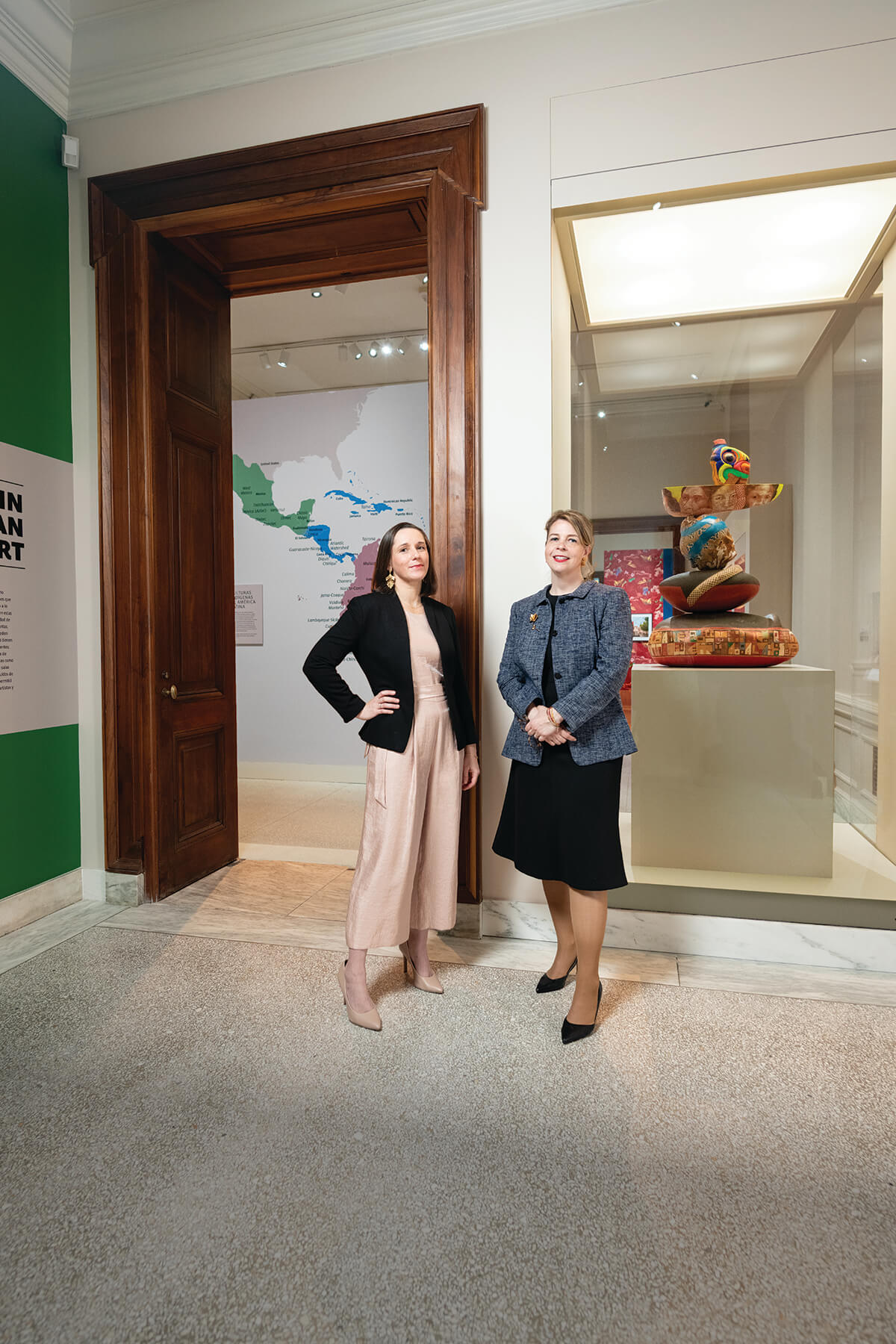Arts & Culture
Past Meets Present in ‘Arte Latinoamericano’ at The Walters
The museum's first permanent exhibition of Latin American art represents 4,000 years of history, mixing antiquities with current works made by living Latinos and Latin Americans—including Baltimore artists.

At first, Peruvian artist Kukuli Velarde was reluctant to sell her sculpture, Wak’a del Agua—a five-tiered painted ceramic structure that resembles a precarious rock cairn. The work grapples with the impact of colonialism and references the Inca tradition of stacking stones to mark a place as a wak’a—a sentient entity embodied as a mythical ancestor hardened into earth.
Velarde now lives in Philadelphia and teaches at the Maryland Institute College of Art, but her sculpture narrates her Indigenous origins through its five fired-clay layers, each linked to a unique period of history in her native country.
“It’s very much alive to her, so she had to be sure we would care for it and that it would be respected,” says Patricia Lagarde, Wieler-Mellon postdoctoral curatorial fellow for Art of the Americas and co-curator of The Walters’ new permanent collection exhibition, Latin American Art / Arte Latinoamericano.
Today, Velarde’s wak’a welcomes visitors at the entrance to Arte Latinoamerico, located in the second-floor galleries next to the Sculpture Court. Featuring more than 200 works from 40 cultures across North, South, and Central America, as well as the Caribbean, it’s the first permanent exhibition of Latin American art at The Walters. It’s also one of the few substantive displays of art of the Americas on the East Coast.
It’s an ambitious showcase, representing 4,000 years of history, bringing together the ancient past and the present. Organized by geographic area and theme, the installation mixes antiquities, many from the museum’s collection and others on loan, with current works made by living Latinos and Latin Americans—including Baltimore artists Jessy DeSantis, Edgar Reyes, and René Treviño.
“One thing that [co-curator Ellen Hoobler] and I have been trying to put forth with the installation is the idea that these are living cultures,” says Lagarde, pictured left, above. “These are not just old things from the past—they are things people are using to identify and write their cultural and historical narratives today.”
Historically speaking, this has not always been an easy story to tell. Museum founder Henry Walters began collecting during an era when the very concept of Indigenous American art was questioned, and he invested less in antiquities from Latin America than from places like Europe, Egypt, and Asia.
When the museum first opened in 1934, the Latin American art collection was displayed in a single drawer. But it was two significant exhibitions and a major gift of 350 artworks in the 2000s that shifted their course. In 2017, they hired Hoobler as the museum’s inaugural curator of Art of the Americas. Lagarde’s position was created in 2023.
To ensure that Latino voices were authentically represented in Arte Latinoamericano, Hoobler and Lagarde initiated two Spanish-language focus groups and a 12-member Community Advisory Group to help shape the installation. Many of the show’s living artists wrote their own wall labels, which, like the catalogue co-authored by Hoobler and Lagarde, present English and Spanish text side-by-side.
This kind of commitment to Latin American art on the part of cultural institutions is important to Velarde, who sees the exhibition as significant—not just historically, but politically.
“Museums can help people to understand that we immigrants are not coming empty-handed,” she says.
And though the exhibition opened in May, it is already having an impact on the community. More than 1,000 visitors attended the exhibition’s opening, a day-long celebration featuring local Latino chefs, musicians, performers, and artisans.
“Many of our community advisors came to the opening and brought their families and friends, and to me, that is a huge metric for success, because they were proud of their association with the project,” says Hoobler, pictured right.
But perhaps the best part of the opening for her and Lagarde was watching artists like DeSantis and Velarde respond to seeing their work installed alongside the antiquities.
As Velarde later put it, “It was a magical experience to see my little wakita next to her ancestors, her predecessors, promising them continuity, letting them know that we, they, are still here.”